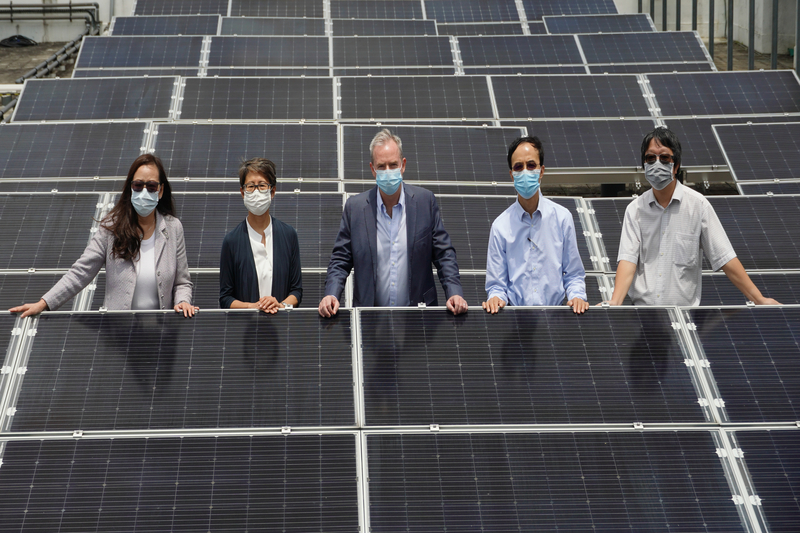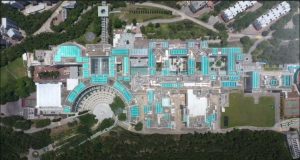
The Hong Kong University of Science and Technology (HKUST) recently announced its latest commitment to being a sustainability leader in Hong Kong by launching a renewable energy project that will include the installation of up to 8,000 solar panels at over 50 locations on campus. Upon completion, this will be Hong Kong’s largest solar energy generation project when complete.

The system will generate up to 3 million units (kWh) of electricity each year – equivalent to the annual electricity consumption of more than 900 three-member households in Hong Kong, and reduce 1.5 million kg of carbon emission per annum over 25 years.
By joining CLP’s Renewable Energy Feed-in Tariff (FiT) Scheme, the project will generate around $160 million up to the end of the FiT Scheme in 2033. After paying off the costs of the installation, HKUST will receive an average of $4 million per year that will be reinvested in further campus energy efficiency and greenhouse gas reduction projects.
Part of the system will also be dedicated as a living laboratory for the University’s faculty and students to test out their ideas and projects related to solar energy systems. The first phase of construction began last month and the project will continue through 2021.
This project was developed under the University’s sustainability strategic plan, the HKUST 2020 Sustainability Challenge set in 2016, where the university has been identifying large scale initiatives to reduce energy, greenhouse gases, and waste. Taking the opportunity of the FiT Scheme – which encourages the community to develop distributed renewable energy systems – HKUST will install thousands of best-in-class and highly-efficient monocrystalline solar panels, including both the conventional and flexible thin-film PV panels.
HKUST will be working with one of the most experienced solar power project developers in Hong Kong to install the solar PV systems at more than 50 campus locations, including student and staff residences, academic and research blocks as well as sports and transport complexes.
To increase HKUST members’ environmental awareness and their understanding of renewable energy and sustainable development, HKUST will set up an innovative education centre to showcase different types of solar panels and other new technologies such as insulation coating and solar cells. Dashboards will also be accessible by mobile phones to show real-time energy data generated across the campus.
The centre will also serve as a platform to engage HKUST members for interaction and collaboration. For instance, project teams of the Sustainable Smart Campus as a Living Lab (SSC) – an initiative launched by the University in 2019 for HKUST members to try out their smart and innovative ideas on campus – can make use of the centre as well as the solar panel system to undertake research.
The Secretary for the Environment stated that HKUST’s large scale solar energy generation system is well-recognised and serves as an excellent model. The project not only supports Hong Kong’s transition towards a low-carbon society but also attempts to integrate research and education on environmental innovation and technology in a meaningful way.
HKUST has distinguished itself as an inspiring exemplar to the younger generation, he added. Hong Kong is committed to implementing the Hong Kong’s Climate Action Plan 2030+ and exploring the long-term deep decarbonisation strategy.
The official noted that he looks forward to seeing HKUST proactively take up the leading role of climate action and further demonstrate stronger support for clean energy, green building and energy-saving, waste reduction and more.
















